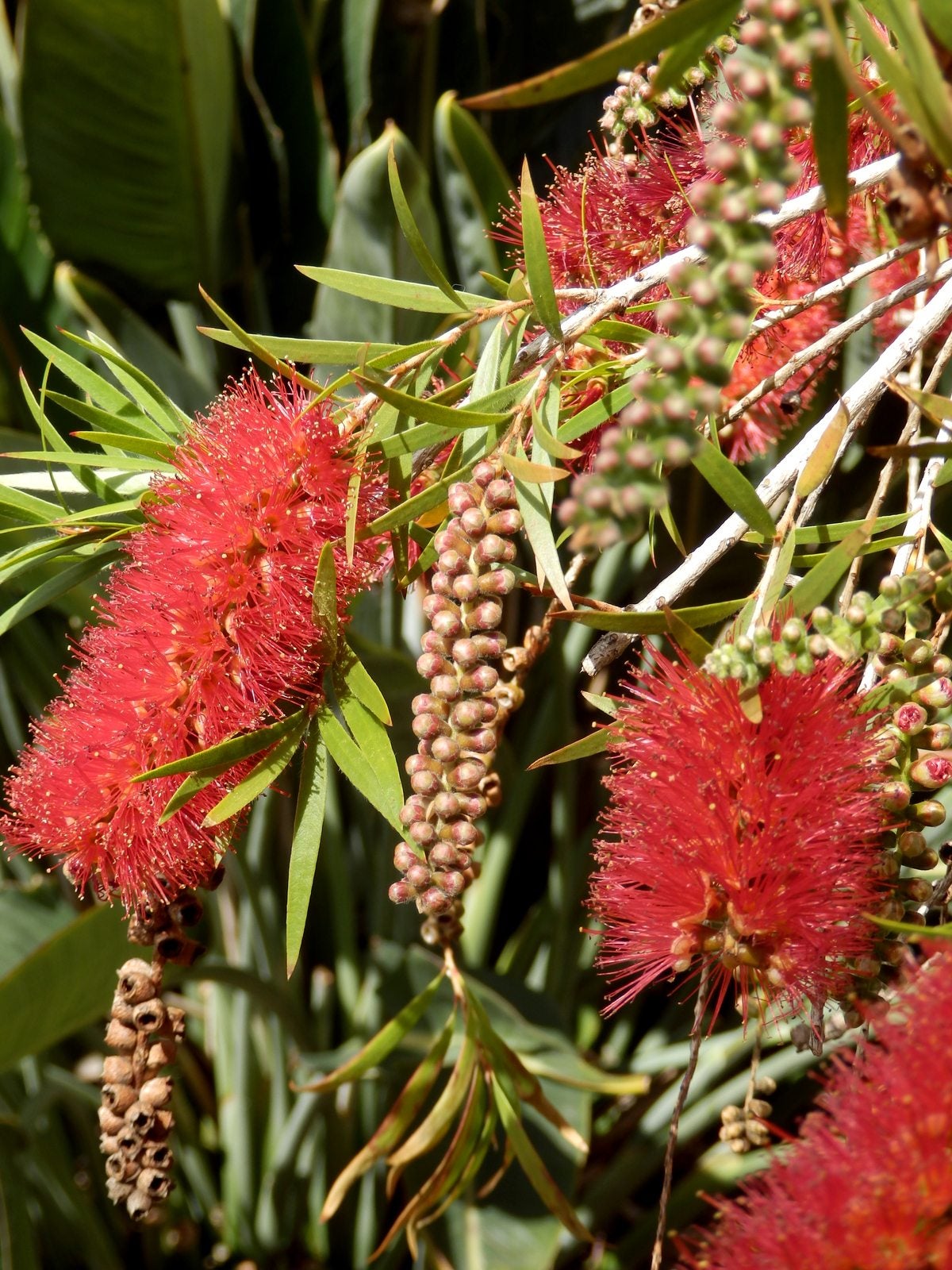Propagation Of Bottlebrush Trees: Growing Callistemon From Cuttings Or Seed


Bottlebrush trees are members of the genus Callistemon and are sometimes called Callistemon plants. They grow spikes of bright flowers composed of hundreds of tiny, individual blossoms that appear in spring and summer. The spikes look like the brushes used to clean bottles. Propagation of bottlebrush trees is not difficult. If you want to learn how to propagate bottlebrush trees, read on.
Propagation of Bottlebrush Trees
Bottlebrushes grow into big shrubs or small trees. They are excellent garden plants and can range from several feet (1 to 1.5 m.) tall to over 10 feet (3 m.). Most tolerate frost and require little care once established. The blaze of flowers is spectacular in summer, and their nectar attracts birds and insects. Most species are frost tolerant. It is understandable that you might want to increase the number of these lovely trees in the backyard. Anyone who has access to one bottlebrush tree can begin propagating bottlebrush. You can grow new bottlebrush trees either by collecting and planting callistemon bottlebrush seeds or by growing callistemon from cuttings.
How to Propagate Bottlebrush Trees from Seeds
Propagating bottlebrush is easy with callistemon bottlebrush seeds. First, you have to look for and collect the bottlebrush fruit. Bottlebrush pollen forms on the tips of the long, flower spike filaments. Each blossom produces a fruit, small and woody, that holds hundreds of tiny callistemon bottlebrush seeds. They grow in clusters along the flower stem and can remain there for years before the seeds are released. Collect the unopened seeds and store them in a paper bag in a warm, dry place. The fruit will open and release the seeds. Sow them in well-draining potting soil in spring.
Growing Callistemon from Cuttings
Bottlebrushes cross-pollinate readily. That means that the tree you want to propagate may be a hybrid. In that case, its seeds probably will not produce a plant that looks like the parent. If you want to propagate a hybrid, try growing callistemon from cuttings. Take 6-inch (15 cm.) cuttings from semi-mature wood in summer with clean, sterilized pruners. To use the cuttings for the propagation of bottle trees, you need to pinch off the leaves on the lower half of the cutting and remove any flower buds. Dip the cut end of each into hormone powder and plunge into rooting medium. When you are growing callistemon from cuttings, you’ll have more luck if you cover the cuttings with plastic bags to hold in moisture. Watch for roots to form within 10 weeks, then remove the bags. At that point, move the cuttings outdoors in springtime.
Sign up for the Gardening Know How newsletter today and receive a free copy of our e-book "How to Grow Delicious Tomatoes".

Teo Spengler is a master gardener and a docent at the San Francisco Botanical Garden, where she hosts public tours. She has studied horticulture and written about nature, trees, plants, and gardening for more than two decades, following a career as an attorney and legal writer. Her extended family includes some 30 houseplants and hundreds of outdoor plants, including 250 trees, which are her main passion. Spengler currently splits her life between San Francisco and the French Basque Country, though she was raised in Alaska, giving her experience of gardening in a range of climates.